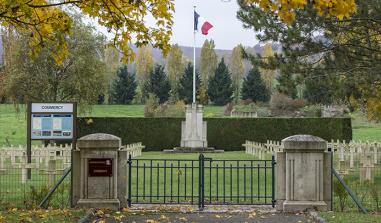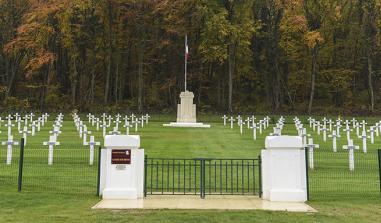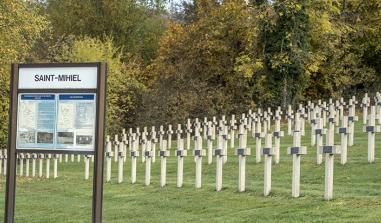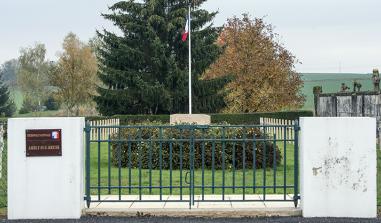Béveaux National Cemetery
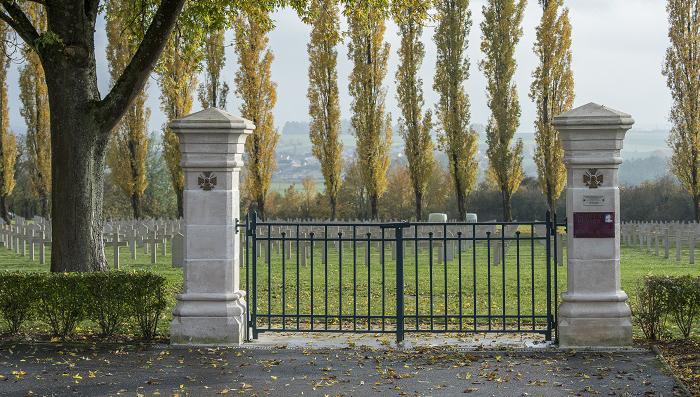
Béveaux National Cemetery. © ECPAD
Click here to view the cemetery’s information panel 
Located in the commune of Verdun, Bévaux National Cemetery contains the remains of French soldiers killed in the fighting at Verdun between 1916 and 1918. Established in 1914, the cemetery, like a number of others on the Verdun battlefield, should have been transferred to Douaumont. But the idea caused such an uproar among the grieving families that it was eventually maintained, in 1924, then redeveloped in 1967 to accommodate the bodies of other soldiers killed in the Verdun sector. In 1962, 569 bodies were brought from Petits Monthairons cemetery. Bévaux contains the individual graves of more than 3 500 French soldiers killed in the First World War and 485 killed in the Second World War.
The Battle of Verdun, 1916-18
During the Battle of the Marne, Verdun and its ring of forts formed an entrenched camp that provided solid support for General Sarrail’s 3rd Army. The enemy sought to bring down this stronghold with two attacks: one to the west against Revigny-sur-Ornain, the other to the east against Fort Troyon. Both attacks failed.
Throughout 1915, General Joffre launched bloody operations to the east against the Saint Mihiel salient and, to the west, deployed the 3rd and 4th Armies to defend the Argonne. These local combats descended into tunnel warfare and became a real test for soldiers’ morale.
It was in this sector, therefore, where French positions were poorly maintained, that Germany’s General Falkenhayn decided to launch an offensive to wear down the French Army. On 21 February 1916, Operation Gericht went ahead against the French positions. After a violent bombardment of the right bank of the Meuse and the town, the Germans advanced over a ravaged landscape. In four days, they progressed four miles, despite determined resistance from the 30th Army Corps, defending the Bois des Caures woods.
On 25 February, the enemy took Fort Douaumont, while General Pétain’s 2nd Army was tasked with defending Verdun. Pétain organised the front and supplies. The Bar-le-Duc to Verdun road became the main artery, the “Sacred Way” which, day and night, brought supplies for the defence of Verdun.
Stalled outside Vaux and Douaumont, on 6 March the German 5th Army expanded operations on the left bank of the Meuse. These two ridges, the only natural obstacles controlling access to Verdun, became the most disputed positions on the left bank of the Meuse. On 9 April, the attack was driven back. For every French and German soldier, the battle became “the hell of Verdun”, in which the artillery triumphed. On 7 June, despite a heroic defence against attack from flame-throwers and gas, Fort Vaux, in turn, fell. The Germans threw everything they had into the battle. On 23 June, 80 000 German infantrymen, preceded by a deluge of gas shells, took the village of Fleury. On the 26th, the Germans took Thiaumont.
The Franco-British offensive launched on 1 July on the Somme forced the Germans to divert troops, aircraft and guns from the Verdun front. The last major attack took place on 11 and 12 July against Fort Souville, less than two miles from Verdun. The bitterest of struggles went on for Hill 304 and Mort-Homme. Between 21 February and 15 July, the two armies fired more than 40 million shells of all calibres. Three quarters of the French Army passed through Verdun, where losses on 15 July amounted to 275 000 dead, wounded or captured. The same was true for the German Army.
On 24 October, Fort Douaumont was recaptured. On 2 November, Fort Vaux fell into French hands. From February to November 1916, French and German troops fought one another in what was one of the most terrible battles of the Great War.
In August 1917, the French recaptured Hill 304 and Mort-Homme, and completely freed up Verdun. But the struggle went on along the Caurières ridge, where enemy artillery deployed new mustard gas shells.
On 26 September 1918, the Allies attacked from Champagne to the Meuse. Bois des Caures was retaken in October.
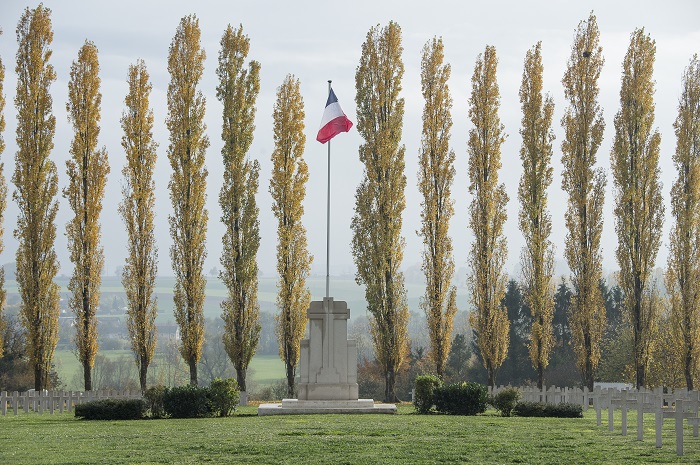
Béveaux National Cemetery. © ECPAD
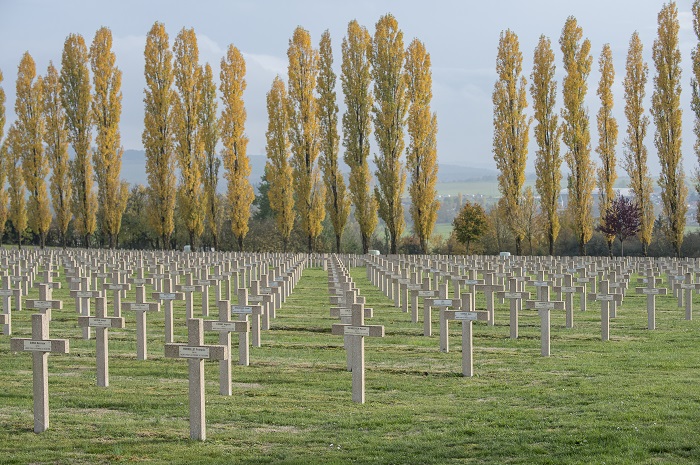
Béveaux National Cemetery. © ECPAD
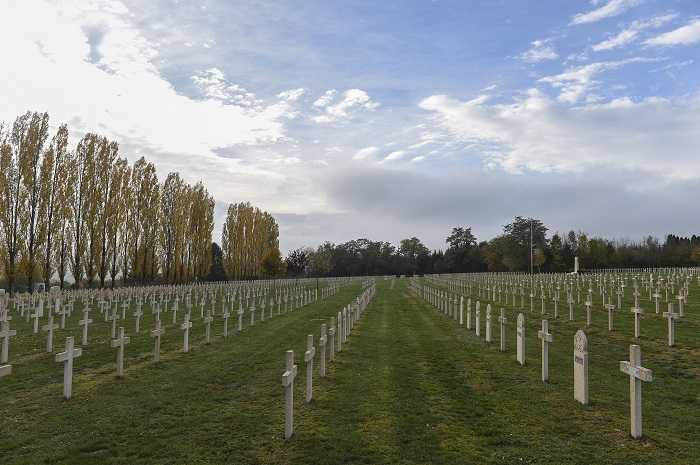
Béveaux National Cemetery. © ECPAD
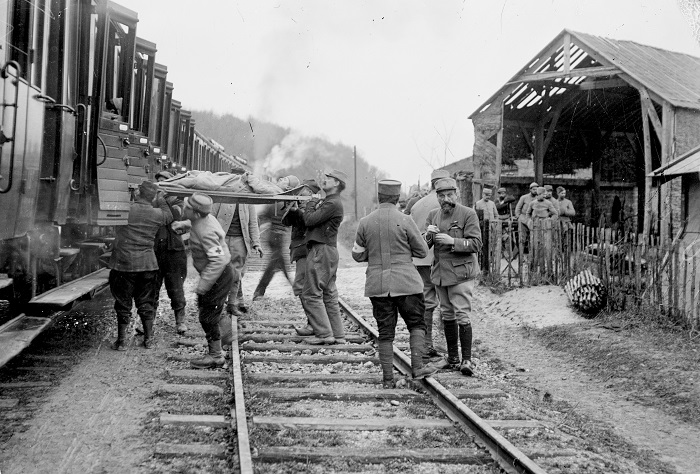
Evacuees board an ambulance train, January 1916. The nearby Bévaux barracks became a major field hospital, comprising as many as five field ambulances, with a surgical unit with a capacity of 100 beds, for the wounded who could not be transported. The other wounded were taken to Queue de Mala evacuation hospital, and those with minor injuries to the Belleray ambulance. © ECPAD
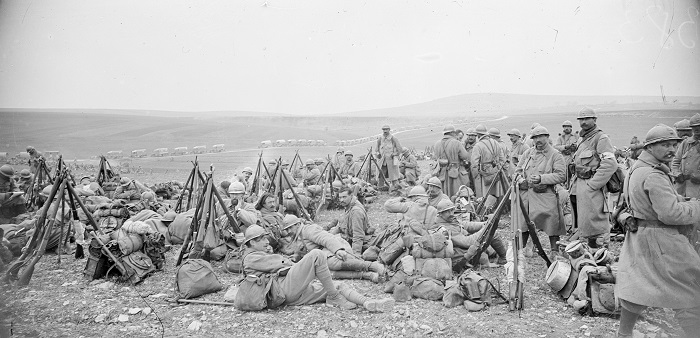
Returning from Fort Vaux, French soldiers wait to go on R&R, April 1916. Joining Bar-le-Duc to Verdun, this road was the vital supply artery for the Verdun front. Unable to use the railways, which were targeted by artillery fire, Captain Doumenc devised and implemented a plan involving continual, rapid rotation. Every 13 seconds, a Berliet truck would set off along the road, which was continually being repaired, thereby supplying the front with troops and equipment. After the war, recalling the roads leading to the triumphs of antiquity, Maurice Barrès named it the “Voie Sacrée”, or Sacred Way (Via Sacra). © ECPAD
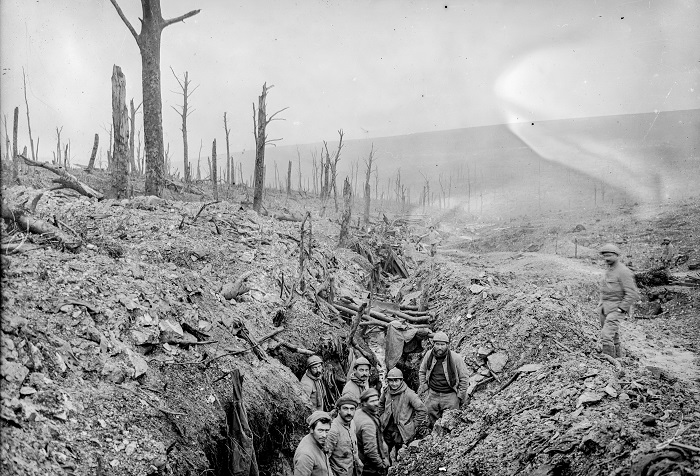
French soldiers in the La Rousse ravine, February 1917. In February 1917, the shelters were all engulfed
by mud, making life very difficult. © ECPAD
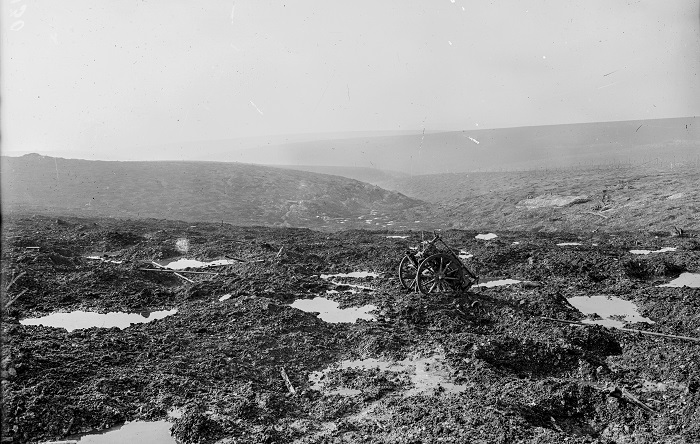
A landscape devastated by bombing, Les Chambrettes sector, February-March 1917. The mud made the support trenches impassable. By heavy rain, the trenches flooded. The troops then had to become navvies, repairing the trenches damaged by artillery fire and enduring many hardships in the midst of these cesspools. © ECPAD
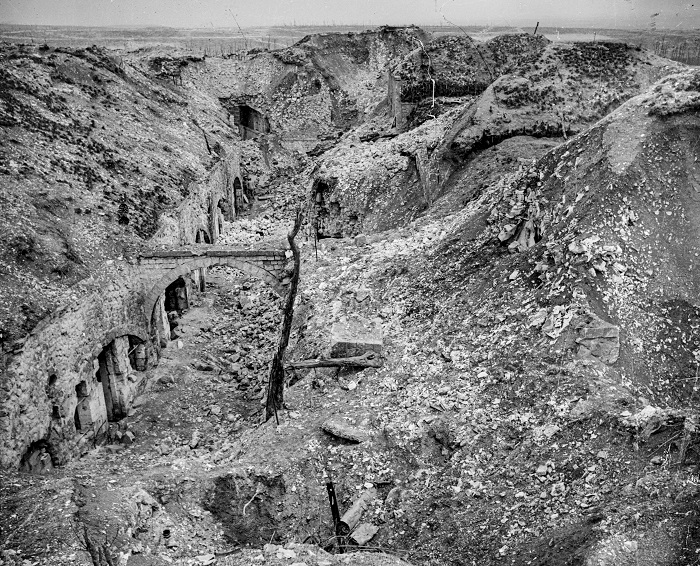
The chemin de ronde (wall walk) at Fort Tavannes, April 1917. The fort controlled the area behind the Vaux-Souville line and the Étain to Verdun road. In their efforts to reach Souville, the Germans frequently bombarded Tavannes in an attempt to destroy it. But the fort stood up well against the shellfire. On 7 May 1916, a 420 mm shell hit a vault, causing serious damage. © ECPAD
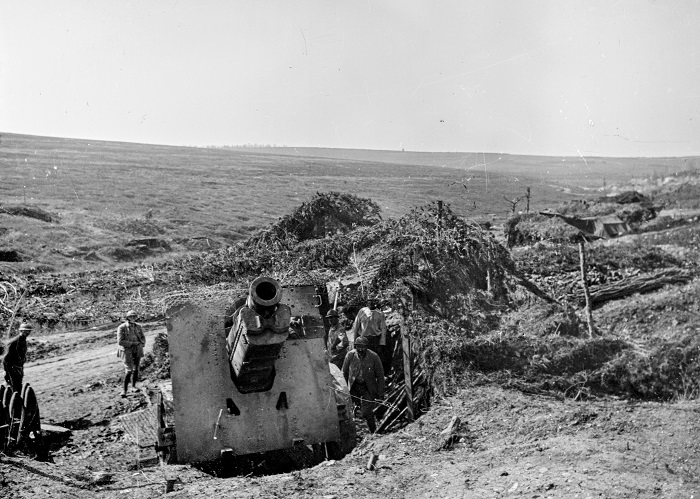
A 220 mm Schneider howitzer is put in position north of Verdun, August 1917. © ECPAD
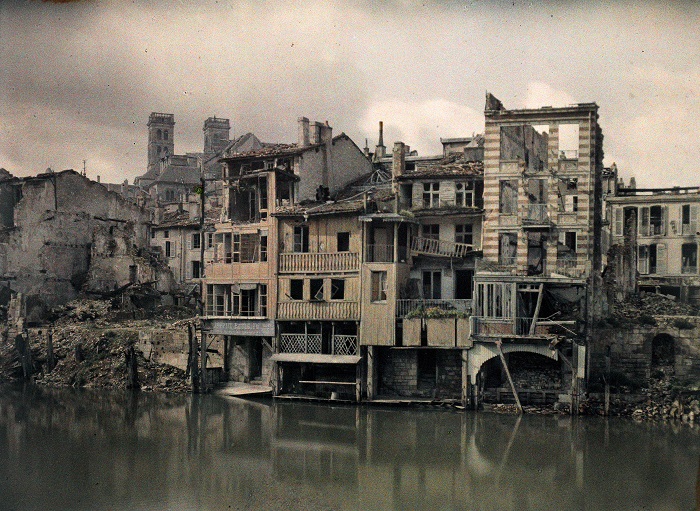
Ruins of Verdun on the banks of the Meuse, 1917. On the right-hand side in the background stands Verdun cathedral. On 13 September 1916, the town of Verdun was awarded the Légion d’Honneur for its resistance. © ECPAD
Practical information
Verdun
Visites libres toute l’année
Read more
Read more
Comité Départemental du Tourisme de la Meuse
33, rue des Grangettes - 55012 Bar-le-Duc Cedex
Tel : 03 29 45 78 40




